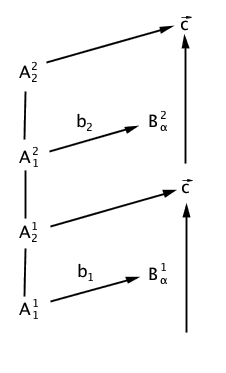in polymers
also contains definition of: enantiomorphous structures in polymers
https://doi.org/10.1351/goldbook.I03299
In the crystalline state, polymer chains are generally parallel to one another but neighbouring chains of equivalent conformation may differ in chirality and/or orientation. Chains of identical chirality and conformation are isomorphous. Chains of opposite chirality but equivalent conformation are enantiomorphous. For example, two ...TG+TG+TG+... helices of isotactic poly(propylene) are isomorphous. Isotactic poly(propylene) chains of the ...TG+TG+TG+... and ...G−TG−TG−T... types are mutually enantiomorphous. With regard to orientation, consider a repeating side group originating at atom  Two equivalent (isomorphous or enantiomorphous) chains in the crystal lattice, having identical components of the bond vectors along c, both positive or both negative, are designated isoclined; two equivalent chains having bond vectors along c of the same magnitude but opposite sign are designated anticlined.
Two equivalent (isomorphous or enantiomorphous) chains in the crystal lattice, having identical components of the bond vectors along c, both positive or both negative, are designated isoclined; two equivalent chains having bond vectors along c of the same magnitude but opposite sign are designated anticlined.
